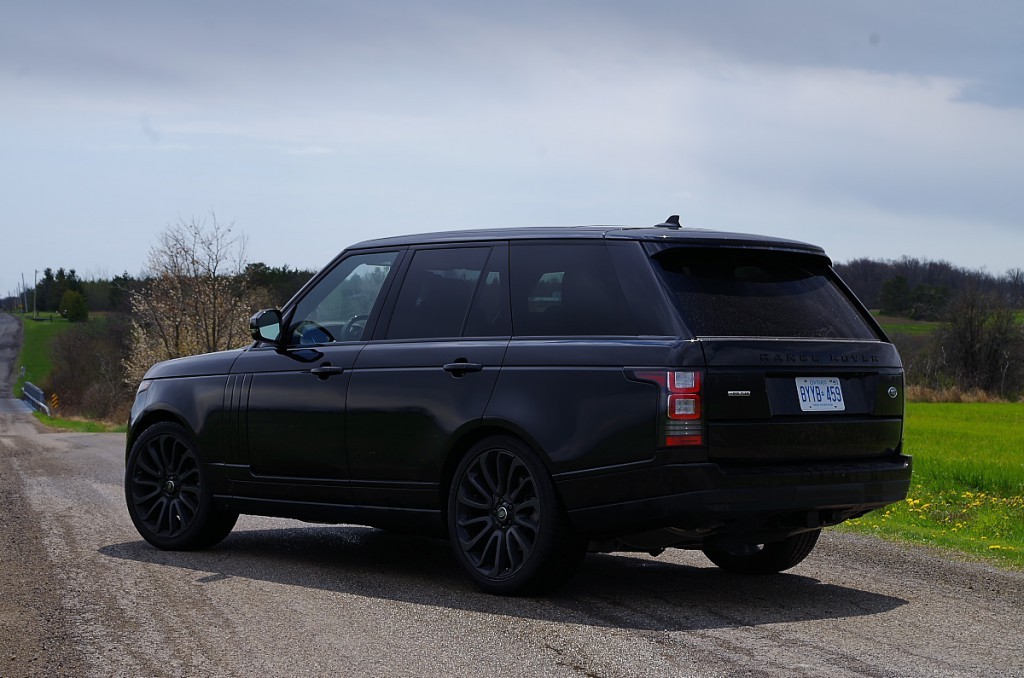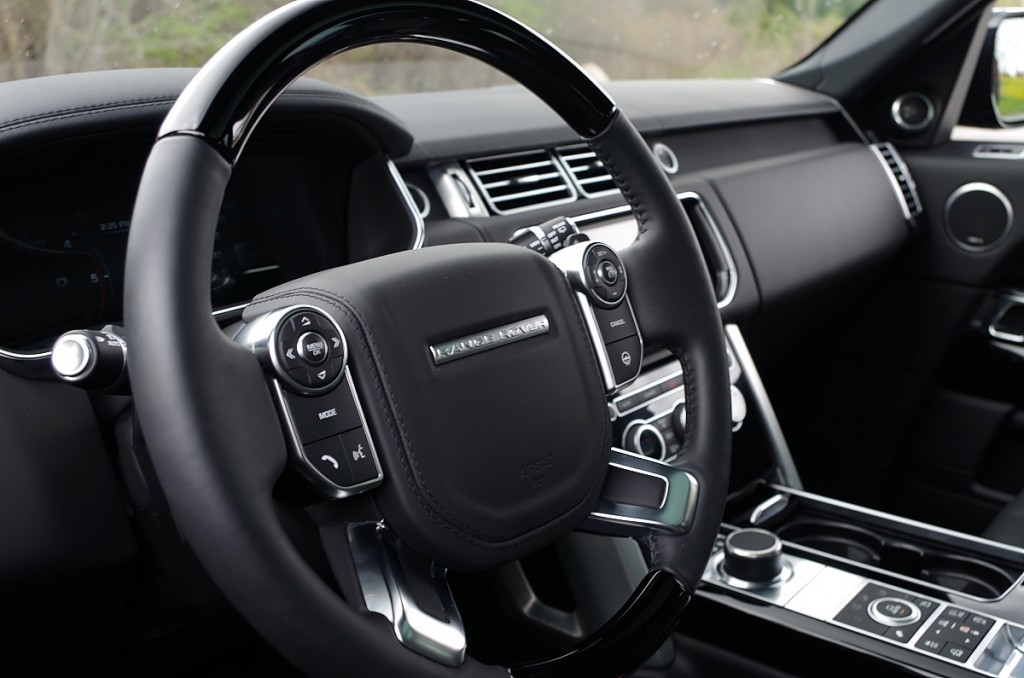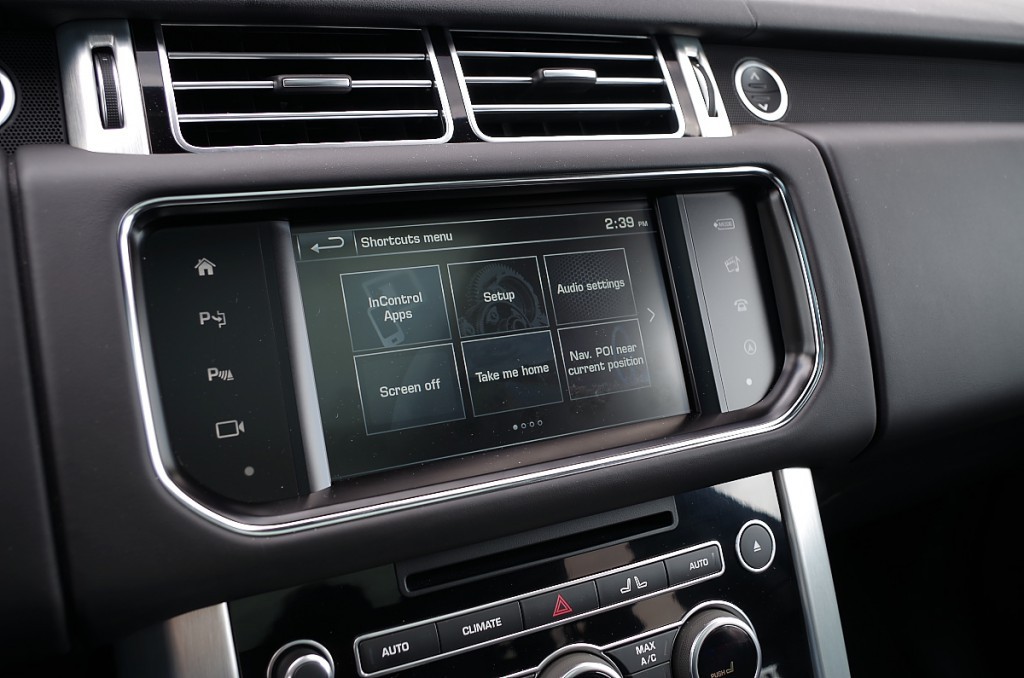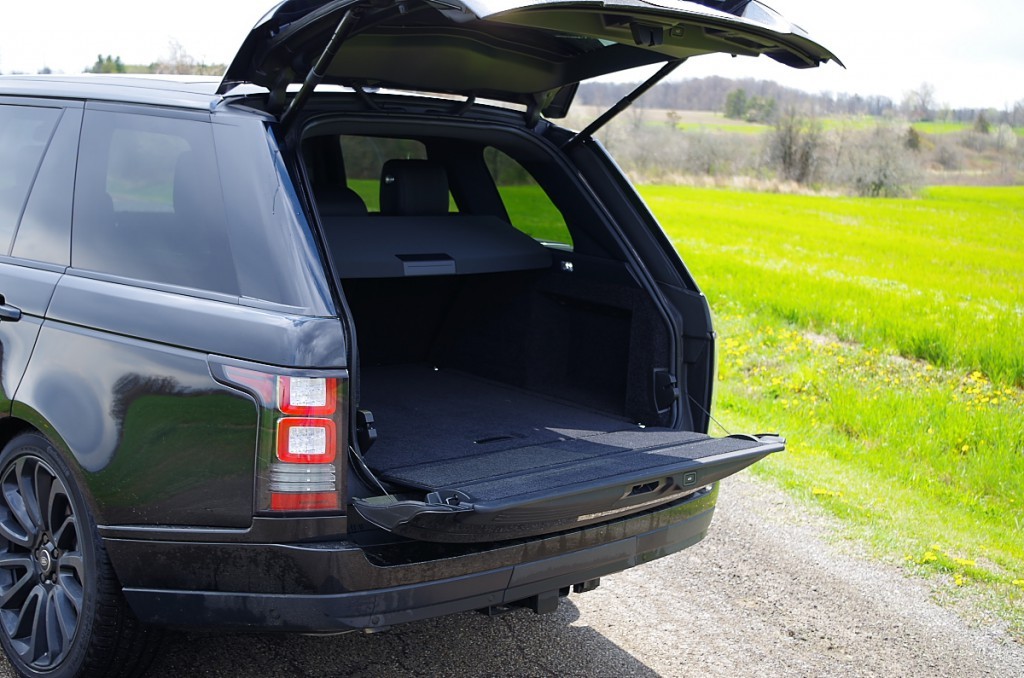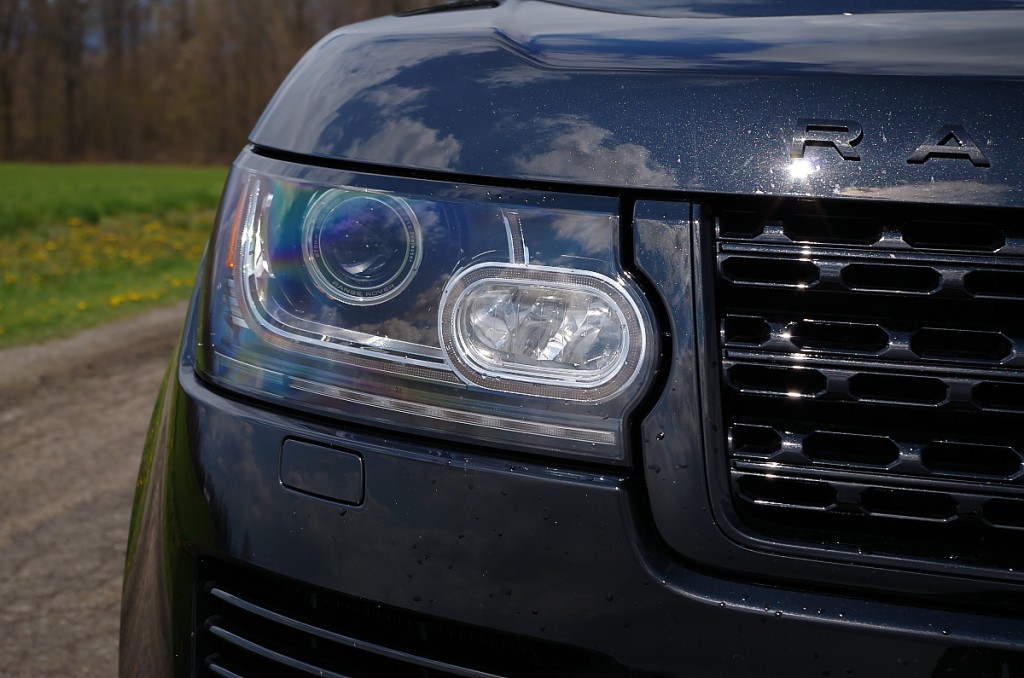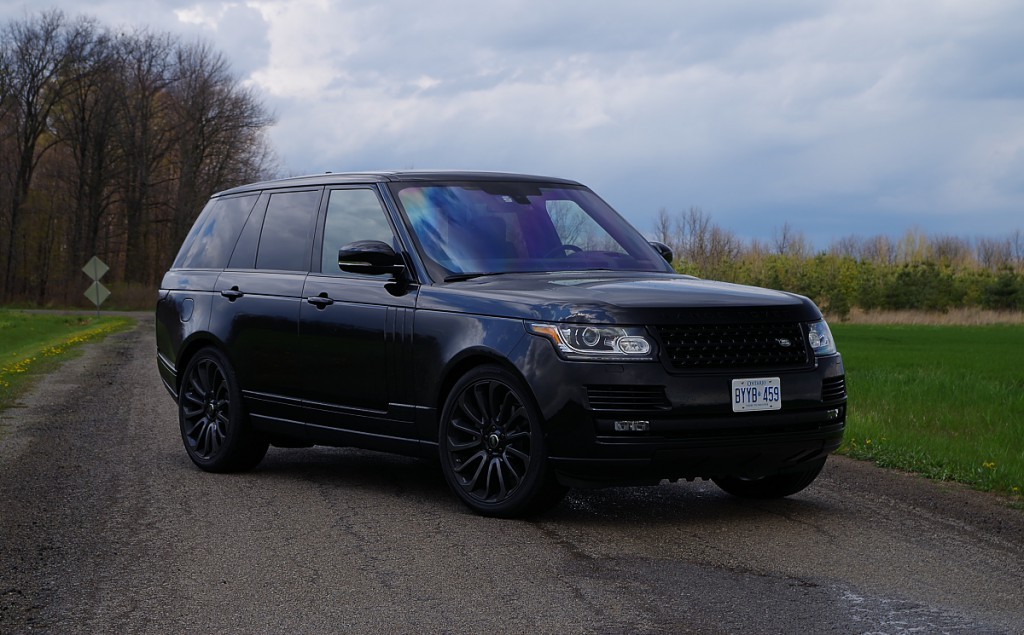
By Robert Nichols
I have always known that Range Rovers are expensive; however I was not aware of just how pricey they actually are. I had been waiting patiently for the keys to the 2016 Range Rover TD6 HSE for a few months and had spent that time plotting how I was going to test what is known to be the world’s best off-road vehicle. I made maps of a few Jeep trails and a couple of impassible when wet rural access roads and eagerly awaited my test drive. Before I set out for a day of rough road driving I popped in the memory stick that was attached to the keys into my laptop in order to familiarize myself with the various aspects of the SUV. Among the information I came across was the pricing for the entire range. This is where my plans were thwarted, not because the vehicle wouldn’t be able to handle my route; rather because I couldn’t stomach the possibility of denting, scrapping or having to winch a stuck $131,000 SUV.
What’s more, the TD6 is the entry level model which carries a base price of $108,490, but the price goes up quickly. The top of the range SV Autobiography LWB starts at $219,990. With this new found appreciation for the SUV I was entrusted with I cocooned it with bubble wrap and eased onto some paved roads which were lightly travelled.
On the Road
On the highways the Range Rover is an absolute joy to drive. The ride is firm but there is a touch of body roll. This is not really a shock because of the tall stature of the TD6 and immense weight. The outward visibility is second to nothing I have ever driven thanks to large windows and a high ride height that lets you see over traffic. The TD6 uses air-ride suspension system that for 2016 operates automatically to lower the vehicle to make entry and egress easier. When the gear selection dial is turned to Park and the ignition is turned off or the driver removes his seatbelt it takes 3 seconds to drop the vehicle a maximum of 50 mm. When the vehicle achieves 15 km/h the system automatically returns to the proper driving height. On less than smooth surfaces around town I found the ride gets a bit jittery at times which was unexpected. Part of the blame should go to the optional 22” wheels and low profile tires which will not absorb much of anything. They do however grip nicely and allow the Rover to corner quicker than expected without any horrendous squealing.
The TD6 comes with the All-Terrain Progress Control (ATPC) system. When driving over very rough terrain in forward and reverse the system allows the driver to set a crawl speed, between 1.8 to 30 km/h, using the steering wheel mounted cruise control buttons. Interestingly the driver can pre-set the crawl speed before setting off, this allows them to remain totally focused on the task of avoiding the obstacles. Just like cruise control, the ATPC is deactivated by depressing the accelerator or brake.
Range Rover has made off-road driver as simple as pushing a button. The fulltime 4WD system can be set to match any condition conceivable. Need to crawl over some large rocks, there is a setting for that, need to climb a sandy dune, or a slippery wet grass hill, yep, there are settings for those too. There is even a locking center differential for more challenging jeep trails. Of course you would need to get your head examined if you plan to do any serious adventure driving in one of these; that is why the less flashy Land Rovers exist. The Range Rover exists to ferry you from the office to your estate, and only if and when there is some kind of apocalyptic act of nature, provide you with the confidence of being able to drive through anything.
Under the Hood
The turbo-diesel engine is a lovely unit. It operates smoothly and is so quiet you can barely tell it’s on. The 3.0L engine uses a single turbo-charger, low pressure exhaust gas recirculation and a two stage oil pump. The power comes on immediately with 440 lb.ft. of torque available at just 1,750 rpm. Passing is possible as you ride the wave of torque but make no mistake this is not a fast vehicle. If you feel the need for speed than you should overlook the diesel and head straight for the Supercharged V8.
This monster is available in two states of tune the lesser of which, and I use that term lightly, makes 510 hp and 461 lb.ft. The more potent version produces an immense 550 hp and 502 lb.ft. With such profound abilities these two like to drink. They are both rated to achieve a combined fuel consumption of 15.1 L/100 km. This number will plummet with anything other than the greenest of driving habits.
On paper the diesel unit is rated to deliver 10.6 L/100 km city, 8.1 L/100 km highway and a combined 9.4 L/100 km. I was able to achieve numbers close to these during my time which is remarkable for such a heavy off-road rig. The TD6 engine uses diesel exhaust fluid injection to reduce NOx emissions. The fluid is injected directly into the exhaust before it reaches the catalytic converter, wherein it changes the NOx into harmless nitrogen. There is also the side benefit of near odourless exhaust.
To me the diesel is the way to go, it is such a refined piece and offers the power where it is needed nice and low in the rev range. The cost of diesel is also low at the moment making this engine the more logical choice. All that torque also adds to the off-road prowess for those brave or wealthy enough to give it a go.
The Cabin
As you would expect from the brand of vehicle that has the distinction of driving the Queen about, the TD6 has a very posh interior. My tester even came with the $500 leather and wood steering wheel. The seats are very nice and the driving position is high affording a great view of the path ahead. Everything you interact with looks and feels like a quality piece. In place of the traditional wood grain trim, our tester had gloss black lacquered wood that unfortunately looked a bit too much like plastic. A few of the nicer features on my tester were the panoramic sunroof, the 825 Watt Meridian sound system, the split tailgate that operates automatically. Control of the infotainment functions is simple thanks to the InControl connect package($700) that allows access to various useful Apps and the InControl Protect($450 option) which is Rover’s version of OnStar.
A little extra wow factor was added by the illuminated tread plates ($1,200), and the Ebony headliner. The Climate Comfort pack should not be over looked in Canada because it adds such luxuries as 4 zone climate control, Oxford Leather Seats, 18 way driver & passenger front seats, climate controlled front and rear seats, massaging front seats with adjustable seat bolsters, the rear bench seat has a load through port and power recline, and a cooler in the front armrest compartment. There was also the Driver tech package ($2,500) which includes a heads up display, rear cross traffic alert, traffic sign recognition, close vehicle monitoring, lane departure warning and blind-spot monitoring. Adaptive cruise ($1,500), and the Premium package which adds adaptive xenon headlights (inc headlight powerwash) with LED signature lighting, Front Fog Lights, Terrain Response 2, All Terrain Progress Control and configurable interior mood lighting round out the options I was able to enjoy. There are numerous others of course including the rear seat entertainment package ($2,400) that adds a pair of 8 inch headrest mounted screens and wireless headphones. One must have feature of this entertainment option is the ‘Journey Status’, which should virtually eliminate the “Are we there yet?” moments from every trip. Basically the system displays updates including time and distance to your destination. The one option I would like to have had a closer look at is the nice looking lockable tracked cargo rail system. It looks to be made of aluminum and as it is adjustable should prove to be a very handy if not stylish way to keep your stuff planted.
Conclusion
The TD6 HSE is one incredible piece of hardware. With the blackout package on my tester it looks amazing and the diesel engine makes a real argument for making the transition to diesel fuel. It does everything with class and elegance. As a family transport it functions perfectly with some great features and a very utilitarian design. If you need to look fab as you drive the kids to school you would be hard pressed to find anything nicer, with the exception of buying a more expensive Range Rover that is.
Base Price: $108,490
Price As Tested: $131,515
Pros:
- Style and power in one very useful package
- Diesel engine is smooth, quiet and odourless
- Comfort for 5
- Legendary Off-road capability for the brave
Cons:
- Price leads most away from ever truly enjoying their off-road vehicle
- You will get dirty looks from envious motorists
- The sheer weight hampers off the line acceleration and over taking
Competition:
- BMW X5 M
- Cadillac Escalade
- Lexus LX
- Lincoln Navigator
- Mercedes-Benz G-Class
- Porsche Cayenne

